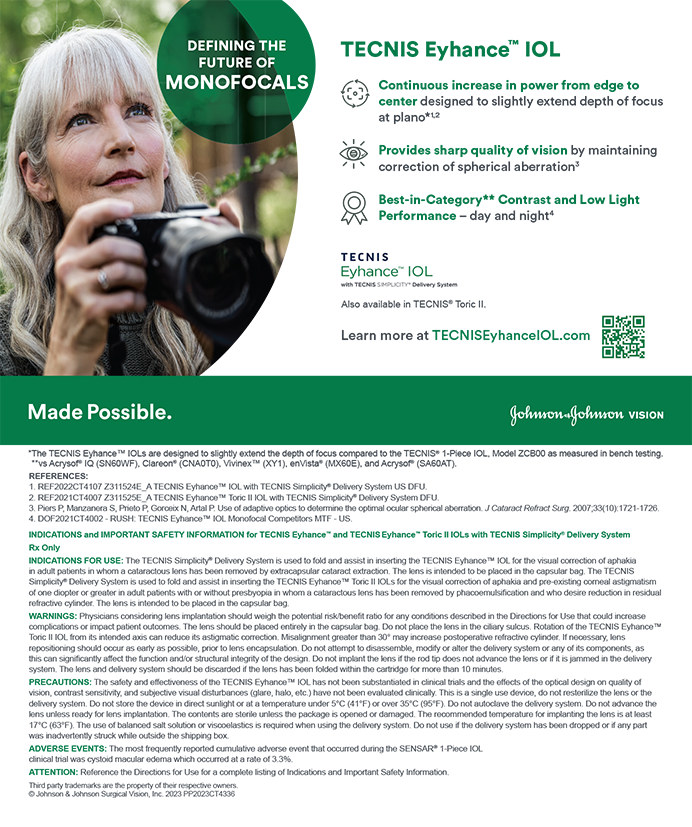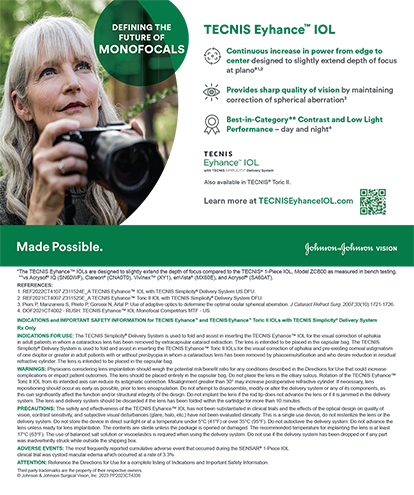I wanted to present three topics for our readership to think about over the next several weeks of summer. Collectively, we can change certain situations during those lazy days of June, July, and August. The topics are (1) up-charging cataract patients for inducing monovision in one eye, (2) pay-for-performance, and (3) the absurdity of "equal pay for equal work" in medical care reimbursement.
Discussions have surfaced recently on the ophthalmology chat lists about up-charging patients who receive targeted monovision with monofocal IOL implants after they undergo cataract surgery. The premise is that this treatment solves the patient's presbyopia. Because treatment for presbyopia is not covered by the Centers for Medicare and Medicaid Services (CMS), the logic is that the surgeon may validly up-charge the patient for it. The CMS have granted presbyopia-correcting IOLs an allowance for an upgrade charge. Is iatrogenic anisometropia with monofocal IOLs a treatment like contact-lens monovision? Does any surgeon up-charge when he creates monovison with laser vision correction or anisometropia (eg, monovision) with contact lenses? Consistency would dictate either charging for all of these efforts or charging for none of them.
William L. Rich, III, MD, the AAO's Medical Director of Health Policy who has worked tirelessly for our fair representation in Washington, recently made some interesting statements about the pay-for-performance movement. In his speech during the retina subspecialty day at the AAO's 2005 meeting in Chicago (which was recounted in recent industry news1), he stated, "P4P is nothing I would have designed!" Yet, he went on to comment, "The strong feeling among decision makers is that it is time to use economic stimuli to motivate doctors to accept quality-of-care measures developed by their own specialty, since CME and Preferred Practice Patterns have failed to change behavior." How can it be that the AAO's mission statement (courtesy of Dr. Rich) is "one of education and advocacy … for our patients so they can have … the world's best eye care," yet CME has failed us? I sense a disconnect. Ophthalmologists are academically among the top 10 of medical school graduates. Ophthalmic care in the US ranks in the world's top 1. Why have the policy makers decided on the monetary penalty hammer? Maybe we can have Dr. Rich elucidate this predicament for us in the coming months.
Several years ago, the late Charles Kelman, MD, stated something to the effect of "how is it appropriate to reimburse a physician with 1 year's experience the same as a physician of 30 years' experience? Unequal work is and has been receiving equal pay. Why are we working on a union pay scale? It is illegal to fix prices, yet our prices are fixed. Furthermore, the lesser-trained generalists pick the low-hanging fruit and leave the dreadful cases for the specialists to solve (and go broke over). The specialist deserves a higher pay scale, and the generalist deserves a lower one. If the payment structure in ophthalmology does not change, such financial and lifestyle disincentives will continue to deter residents from seeking advanced fellowship training.
Please submit your suggested solutions to these issues for possible inclusion in future editions.


